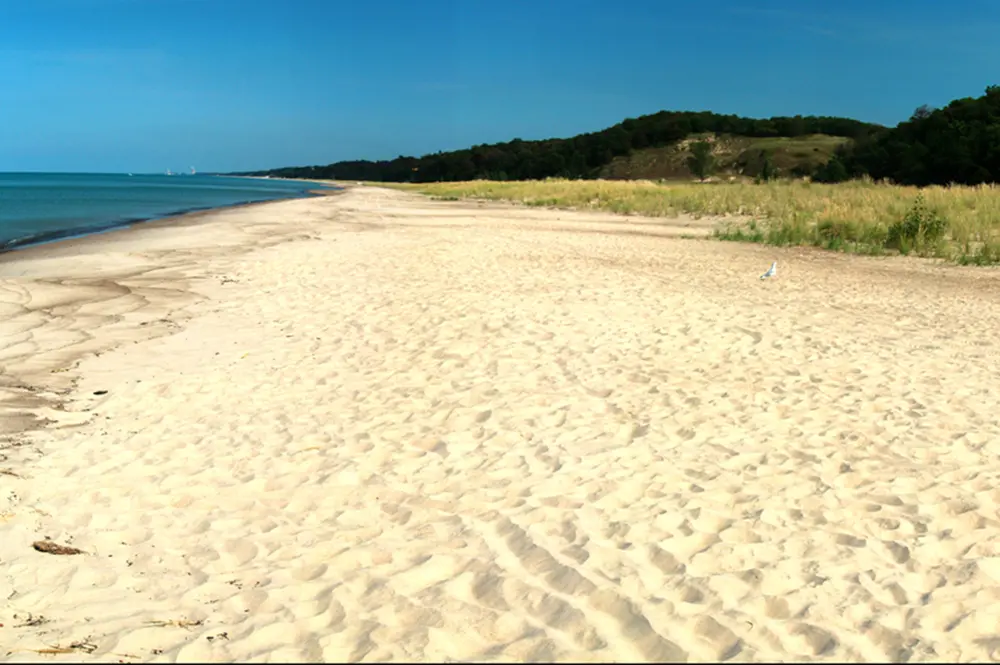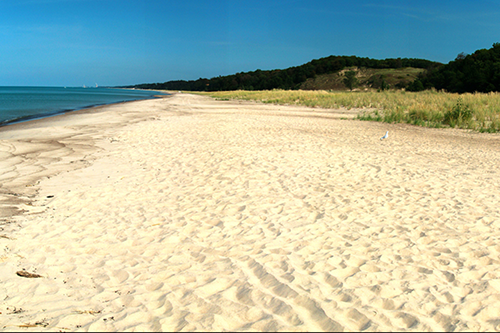

There’s now a national park in Indiana at the southern tip of Lake Michigan, less than 50 miles from Chicago. Indiana Dunes National Lakeshore just got an upgrade. Illinois political science professor Robert Pahre studies and teaches the politics around national parks, often using Indiana Dunes as a classroom. He spoke with News Bureau social sciences editor Craig Chamberlain about the Dunes’ history and value, as well as the support for its new status.
The idea of an Indiana Dunes National Park goes back a century. Why didn’t it happen then?
The idea dates to 1916, the same year Congress created the National Park Service. Director Stephen T. Mather wanted to add parks east of the Mississippi River as a way to broaden political support for his new agency. A lot of people in the Chicago area, including scientists, urban planners and the kinds of people who helped establish the forest reserve system, saw the Dunes as worthy of being a national park. Some of them had second homes in the area.
Local politicians were not convinced. They thought the sand dunes might be valuable for industry – and if you’ve noticed the steel mills around the national park, you’ll know that they weren’t wrong.
Park advocates ended up settling for the creation of Indiana Dunes State Park in 1925, which is more clearly oriented toward beach recreation. The national lakeshore, on land surrounding and beyond the state park, came four decades later.
What makes Indiana Dunes worthy of national park status?
National park employees, politicians, scholars and advocates often disagree about what makes a given site important enough to be a national park as opposed to a national monument or lakeshore, among other possible designations. A national monument generally protects just one thing, such as Devils Tower in Wyoming or Capulin Volcano in New Mexico. A national seashore or lakeshore has mostly recreational resources. A national park generally has several different kinds of resources, such as Yellowstone’s geology, wildlife and wilderness.
For a lot of people, Indiana Dunes is just a recreational destination – it’s a beach, a place to go on a hot summer day. Most people don’t know it, but Indiana Dunes also has remarkable biodiversity – over 1,000 plant species, for example. The United States has more than 400 National Park Service units, and Indiana Dunes is generally listed among the top five or 10 in biodiversity.
That biodiversity also made Indiana Dunes important for the history of science. Professor Henry Chandler Cowles of the University of Chicago played a key role in developing the theory of ecological succession based on his research there.

Are there features of the park you consider hidden gems?
The biodiversity is amazing, but it’s a subtle attraction. I was once on a trail that had prickly pear cacti on the right side of the trail and ferns on the left side of the trail. The moisture difference across the trail was apparently pretty dramatic. If you try to pay attention to little things, you’ll notice some of the wonderful features of the Dunes landscape.
Most Americans were not ready to support that subtle beauty in the 1920s. From the 1960s on, however, park advocates could talk about the dunes using terms like ecosystems and biodiversity.
Over the last few decades, the National Park Service and partners in the community have worked to help restore natural ecosystems such as the Great Marsh. There are some great locations for finding egrets, great blue herons, sandhill cranes and smaller birds in the Great Marsh. There’s even a wheelchair-accessible trail and viewing platform at the marsh, another one at Tolleston Dunes, and some accessible boardwalks through the woods.
Why did the national park designation happen now?
Indiana’s delegation in Congress has been working on this for quite a while. Its members unanimously supported this change. That reflects changes in national public opinion as well as local feelings about the landscape.
Over the last century, Americans have become more inclined to see value in parks. Indiana didn’t have any state parks back when the Dunes was first proposed as a national park; now the state has a system of lovely parks.
The Dunes is part of a human landscape with people who enjoy parks. Some high-income towns are surrounded by the national park, which gives them some cachet. But even the city of Gary, despite the bad press it often gets, now has part of the national park within the city limits, the Miller Park unit. It has dunes, a beautiful lake, some ponds with beaver lodges, and it used to have some endangered butterflies.
So there’s a wide range of people in the region who wanted a national park. Even the heavy industry of steel mills, power plants and the Port of Indiana like the quality of life that comes from being next to a national park. A regional plan, the Marquette Plan, sees the natural beauty of the area as part of a community where people want to work and live. That vision helped provide the political support for the national park designation.


